The Power of Remembrance
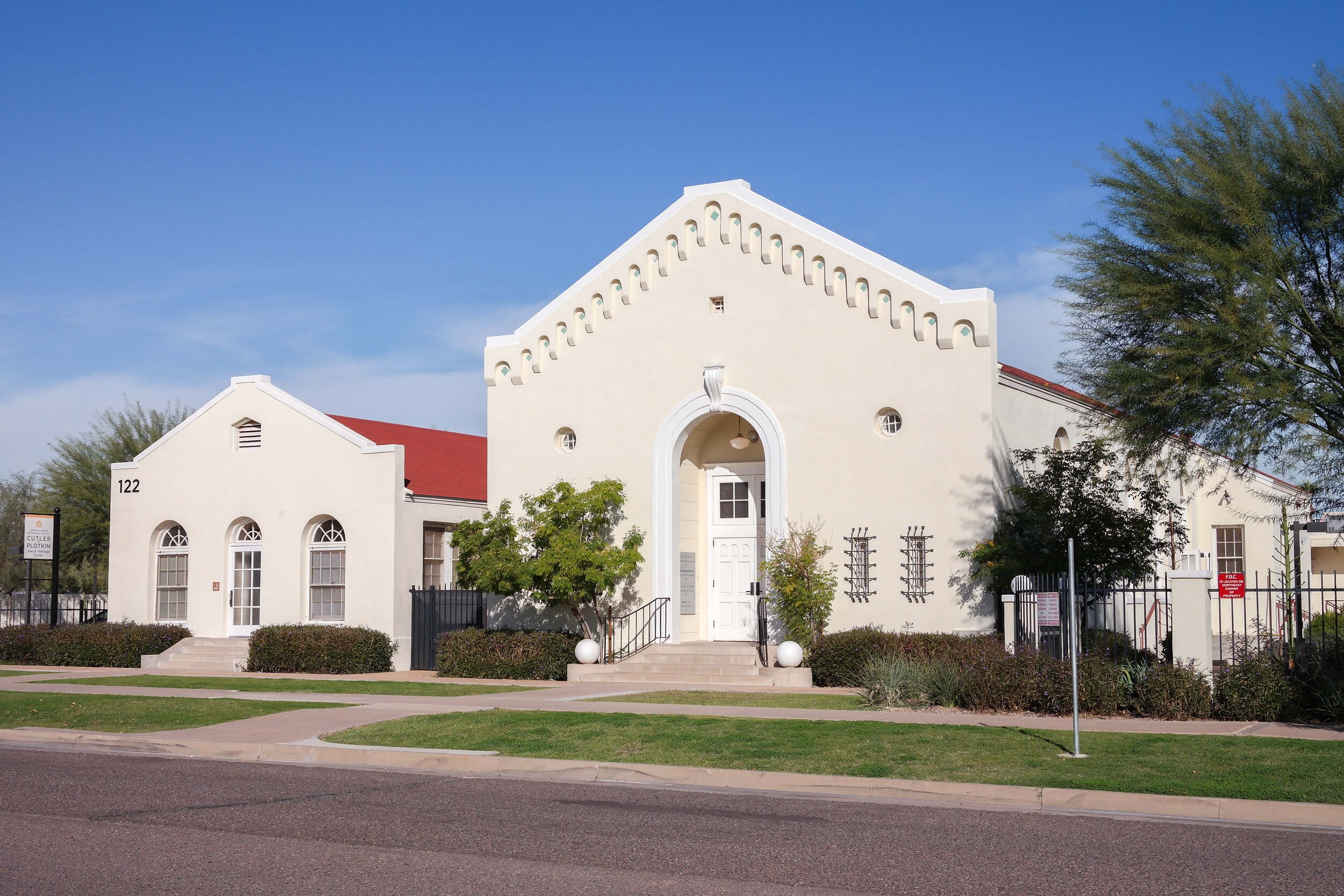
Writer Shannon Severson // Photography Courtesy of the Arizona Jewish Historical Society
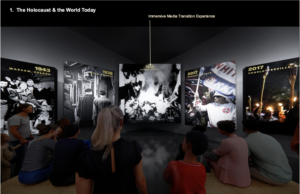


“Never again.” It is a phrase — and an imperative — most closely associated with the atrocities of the Holocaust that persecuted and murdered more than 6 million Jews between 1933 and 1945.
The victims represented two-thirds of Europe’s and one-third of the world’s Jewish population, respectively. It is important for the generations that have proceeded these atrocities to learn about and understand the history of the Jewish people and the stories of other persecuted populations in order to create a world free from hatred and bigotry.
Founded in 1981 in a downtown Phoenix building that served as the Valley’s first synagogue, the Arizona Jewish Historical Society strives to keep the stories, lessons and history of the Holocaust alive for generations. It is also a resource for Jewish culture — serving people of all faiths in the community with monthly events, book clubs, movie screenings and activities in-person and online.
The organization is in the midst of an $18 million “Building a Legacy of Hope” capital campaign that will renovate and expand the existing facility to include a new 17,000-square-foot building with room for a state-of-the-art Holocaust education center, exhibition galleries, classrooms and event space and more.
Phoenix is the largest U.S. city without a Holocaust museum or education center. With the support of the community, that can change.
The Arizona Jewish Historical Society’s executive director, Lawrence Bell, says that there are three fundamental functions that define the organization’s mission.
“We exist to preserve the history of the local Jewish community, educate the public about the Jewish historical experience — not just in Arizona, but everywhere — and promote awareness of diversity in general,” he explains. “We strongly believe that a diverse society is a strong society and that America is not one thing; it’s a collection. It’s like a mosaic of many tiles; each of the tiles is significant.”
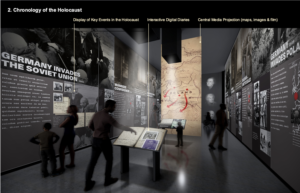


History Comes to Life
A key to understanding is to learn about the experiences of survivors in a tangible way. To facilitate this, the Arizona Jewish Historical Society has added a powerful interactive exhibit to its museum, the Cutler-Plotkin Jewish Heritage Center. Through Aug. 2, “Stories of Survival: An Immersive Journey Through the Holocaust” curates the survival stories of individuals who eventually made their homes in Arizona.
“We have always educated people about the Holocaust, but lately we’re much more specific about that topic,” Bell says. “We’re finding that there’s a great need for it. As part of that, we run a free monthly speaker series online where we interview a local survivor every month. In our second series, ‘Surviving Humanity,’ we talk to people who have experienced other acts of injustice. We say, ‘Never Again,’ but it has actually happened again and still continues in various places.”
Room by room, visitors view historical artifacts like a set of striped prison clothing with a metal star of David and numbered identification plate attached, money used in the Warsaw ghetto and a Nazi medical officer’s uniform. There are photos and detailed stories about the timeline of the Holocaust, along with stories and portraits of featured Arizonan survivors — then and now. The exhibit is enhanced by original artwork from Robert Sutz.
There are four survivors who are specifically featured. Included is Esther Basch — who had direct interactions with Josef Mengele, also known as the Angel of Death — during her time at Auschwitz and endured a five-day death march to the Salswedel sub-camp and ammunition factory two weeks before she was liberated by American soldiers on April 14, 1945.
Incredibly, Basch was reunited with a member of the 85th Infantry that liberated her camp when Max Lieber traveled from New Mexico for an emotional reunion. As they embraced each other, the two were surrounded by Basch’s family who would have never been born without the bravery of those U.S. troops.
Oskar Knoblauch, the late Samuel Hilton — a survivor of the Warsaw ghetto and Majdanek camp — and the late Dr. Alex White — whose was saved by being on Oskar Schindler’s famed list — are also central figures in the stories told.
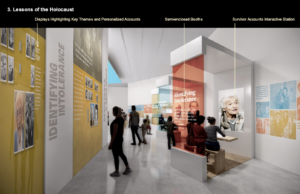


Knoblauch plays a special role in the exhibit. He is depicted as a life-size hologram, that allows guests to ask more than 1,000 different questions in real time about his experiences in the Krakow Ghetto and his time in the Majdanek concentration camp in Poland, where his father was murdered.
He introduces himself and talks of life with his family of five before they fled to Poland and of how he was separated from his mother when they arrived at the camp. Knoblauch recorded his biography over the course of many days in order to complete the project with the USC Shoah Foundation. It’s very much like sitting down for an in-person conversation with a survivor — something that fewer and fewer people will have the opportunity to do.
“We’re living in a moment where the survivor generation is passing away,” Bell says. “This is the very last group of young people who will ever meet a survivor. If you’re in school today and you’ve met a Holocaust survivor, you should consider yourself very fortunate because the ones that come after you will not have that.
“At the same time as survivors are disappearing, awareness of the Holocaust itself is fading. A recent study indicated that as many as 22% of millennials have never heard of the Holocaust. We want to make people aware of the past so that we might build a more peaceful understanding for our future.”
The Arizona Jewish Historical Society makes many stories, interviews and teaching materials available on its website. Knoblauch’s memoir, “A Boy’s Story, A Man’s Memory: Surviving the Holocaust 1933-1945” is included in “The Hope Chest,” a complete curriculum for Holocaust education.
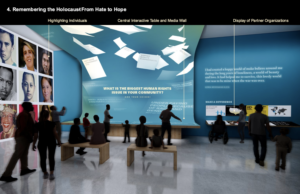


Walking with a Survivor
The other interactive element of the exhibit is a 20-minute, immersive virtual reality experience called “The Last Goodbye.” Participants don a VR headset and meet survivor Pinchas Gutter as he travels to the Majdanek concentration camp in Poland — the last place he saw his parents and twin sister who were murdered at the hands of the Nazis.
The viewer feels as if they are walking right alongside Gutter as he recounts the heart-wrenching story of the atrocities he and his fellow prisoners faced.
He speaks of the last time he saw his twin sister, Sabine, as she ran in fear to embrace their mother, her blonde braid trailing down her back. Sadly, time and trauma have completely erased Gutter’s memory of his twin’s face. The memory of the blonde braid is all that remains.
Gutter explains that he has been compelled to return to Majdanek multiple times because it is the final resting place of his family. To hear his emotions, the echoing sounds of the rooms and to see the remains of the camp through Gutter’s eyes is an experience that truly cannot be forgotten.
Mary Ellen Page, a docent at the museum, has a degree in World War II studies from Arizona State University and counts her involvement as a privilege.
“It’s the most enriching thing I’ve ever done in my entire life,” Page says. “This is so important for adults to see, but it’s even more important for kids to see. You may not be able to teach third-graders [about the Holocaust itself], but you can teach them about bullying and making people feel excluded or centering on excluding a certain type of person.
“We’ve had a very difficult couple of years in America with anti-semitic attacks on the rise, so I think it’s important to have a connection on this level. You’re looking somebody in the eye and you’re hearing them speak, saying, ‘This is my story.’ It’s not just in a book. It’s real.
“If all kids do is come in and ‘talk’ to Oskar, they’re going to get a meaningful experience.’”
‘Stories of Survival: An Immersive Journey Through the Holocaust’
Through Aug. 2 // The Cutler-Plotkin Jewish Heritage Center // 122 E. Culver St., Phoenix // $5 // azjhs.org

